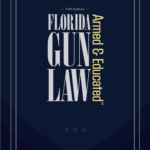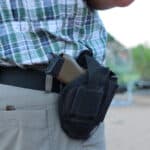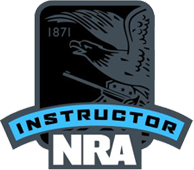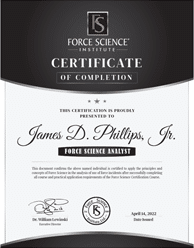
- July 29, 2022
- |
- Castle Doctrine,Gun Laws
Castle Doctrine in Florida: Does It Apply Outside Your Home?
Protection by the Castle Doctrine Outside of the Home
According to an article by Click Orlando, the police in Lakeland, Florida recently arrested a man accused of entering a homeowner’s property without permission. The suspect was seen by the homeowners at the front door. The man shortly thereafter walked around to the back of the home, where he entered the screened back patio and got in the pool. The homeowner grabbed an unloaded gun and a machete and confronted the suspect. The suspect laughed and tried to open doors to the home. Eventually, the police were called and placed the intruder under arrest. According to the article, no force was used by the homeowner. What were the homeowner’s rights in this situation? What kind of force could he have used? Would he have benefitted from the Castle Doctrine?
Use of Non-Deadly Force Outside of the House
Under Florida Statute § 776.031, “a person is justified in using or threatening to use force, except deadly force” to terminate a trespass on their real property other than a dwelling or personal property. In the article above, the intruder clearly attempted to get into the homeowner’s dwelling. Before he reached the front door, the intruder would have just been in the front yard. At this point, assuming the front yard is not fully fenced in, the homeowner would have had the right to remove the trespasser using non-deadly force ONLY.
Application of the Castle Doctrine Outside – Use of Deadly Force on the Patio
The statute above plainly states that deadly force may not be used to terminate a trespass on property. However, the law changes once an intruder has broken into the dwelling. According to Florida’s Castle Doctrine Statute (Florida Statute 776.013), a dwelling is “a building or conveyance of any kind, including any attached porch, whether the building or conveyance is temporary or permanent, mobile or immobile, which has a roof over it, including a tent, and is designed to be occupied by people lodging therein at night.” The screened in patio would certainly qualify as a dwelling under this statute. This means that the homeowner had the right to use of threaten to use deadly force against the intruder. It is even more apparent that the homeowner could use or threaten deadly force when the intruder attempted to get into the home through the back door.
Application of the Castle Doctrine Outside – Use of Force Inside a Fenced in Yard
Florida case law suggests that a fenced in yard may be protected by the Castle Doctrine. See State v. Vino, State v. Vino, 100 So. 3d 716 (Fla. 3d DCA 2012). This means that a person may be entitled to use deadly force in situations where a trespasser has climbed over or forcibly broken a fence to gain access to a person’s yard. However, these cases were not decided on this exact issue, which means there is no official ruling as to whether or not a fenced in yard triggers the Castle Doctrine. For now, we can only say that there is a strong argument that the Castle Doctrine applies. It would require a judge to rule on the issue as a matter of law to provide a definitive answer. For more information or assistance, consider consulting a Florida Castle doctrine attorney.
One other time a person may use deadly force is when they are seeking to prevent a forcible felony. One such felony is burglary. We will be posting an article explaining what a forcible felony is in the future, so stay tuned.
Defending Your Property in Florida
David Katz goes answers what are the laws in Florida when it comes to defending your property? Can I use deadly force?. If you have any specific questions, please feel free to reach out by submitting your question for us to answer with the form on the right or contact our firm to discuss your issue.
Get in touch

"*" indicates required fields
Copyright © 2022-2025 The Firearm Firm All rights reserved.






















